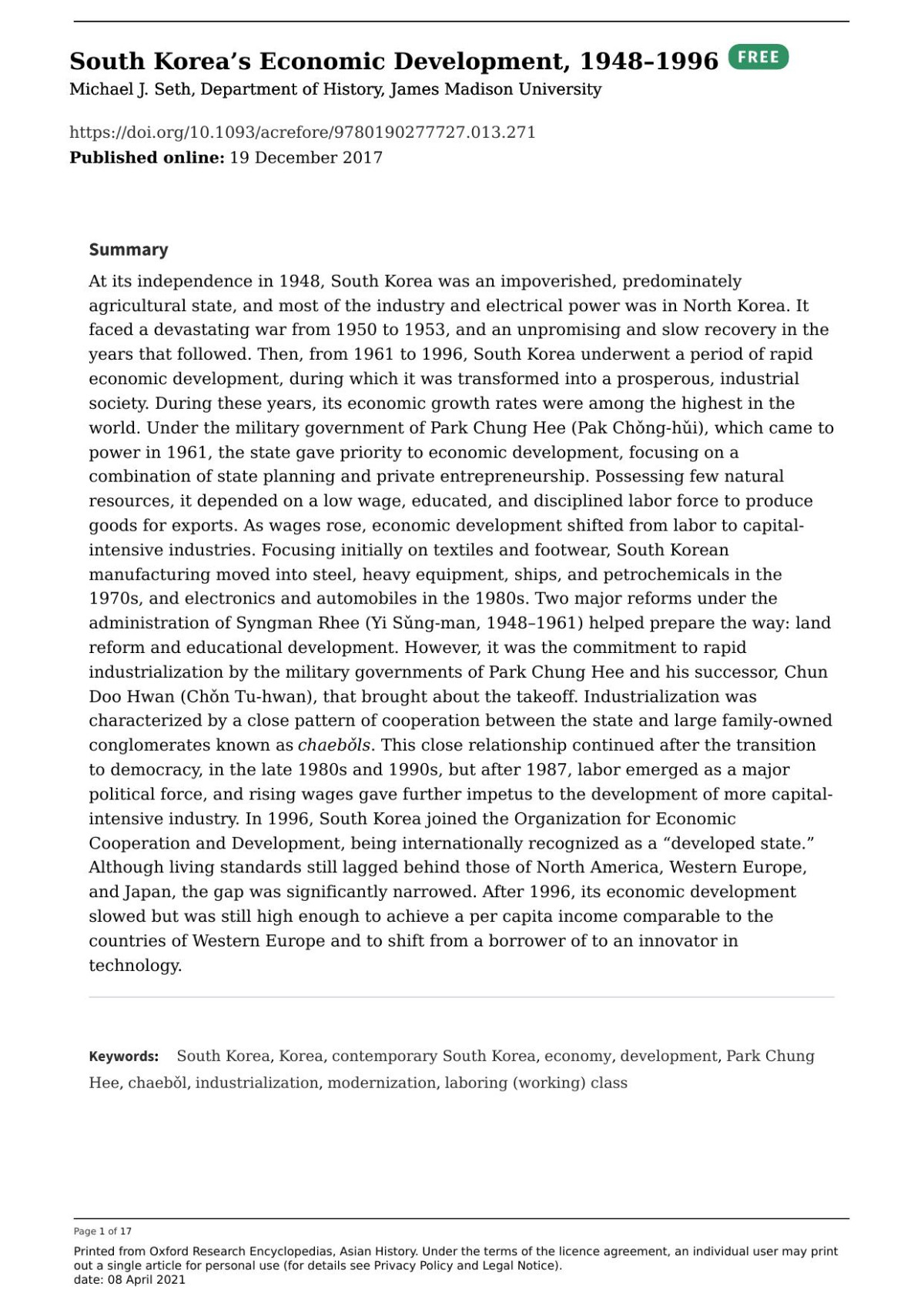Product desciption
South Koreas Economic Development 19481996 Oxford Research Encyclopedia Of Asian History Michael J Seth by Michael J. Seth 9780190277727, 0190277726 instant download after payment.
At its independence in 1948, South Korea was an impoverished, predominately agricultural state, and most of the industry and electrical power was in North Korea. It faced a devastating war from 1950 to 1953, and an unpromising and slow recovery in the years that followed. Then, from 1961 to 1996, South Korea underwent a period of rapid economic development, during which it was transformed into a prosperous, industrial society. During these years, its economic growth rates were among the highest in the world. Under the military government of Park Chung Hee (Pak Chǒng-hǔi), which came to power in 1961, the state gave priority to economic development, focusing on a combination of state planning and private entrepreneurship. Possessing few natural resources, it depended on a low wage, educated, and disciplined labor force to produce goods for exports. As wages rose, economic development shifted from labor to capital-intensive industries. Focusing initially on textiles and footwear, South Korean manufacturing moved into steel, heavy equipment, ships, and petrochemicals in the 1970s, and electronics and automobiles in the 1980s. Two major reforms under the administration of Syngman Rhee (Yi Sǔng-man, 1948–1961) helped prepare the way: land reform and educational development. However, it was the commitment to rapid industrialization by the military governments of Park Chung Hee and his successor, Chun Doo Hwan (Chǒn Tu-hwan), that brought about the takeoff. Industrialization was characterized by a close pattern of cooperation between the state and large family-owned conglomerates known as chaebǒls. This close relationship continued after the transition to democracy, in the late 1980s and 1990s, but after 1987, labor emerged as a major political force, and rising wages gave further impetus to the development of more capital-intensive industry. In 1996, South Korea joined the Organization for Economic Cooperation and Development, being internationally recognized as a “developed state.” Although living standards still lagged behind those of North America, Western Europe, and Japan, the gap was significantly narrowed. After 1996, its economic development slowed but was still high enough to achieve a per capita income comparable to the countries of Western Europe and to shift from a borrower of to an innovator in technology.


